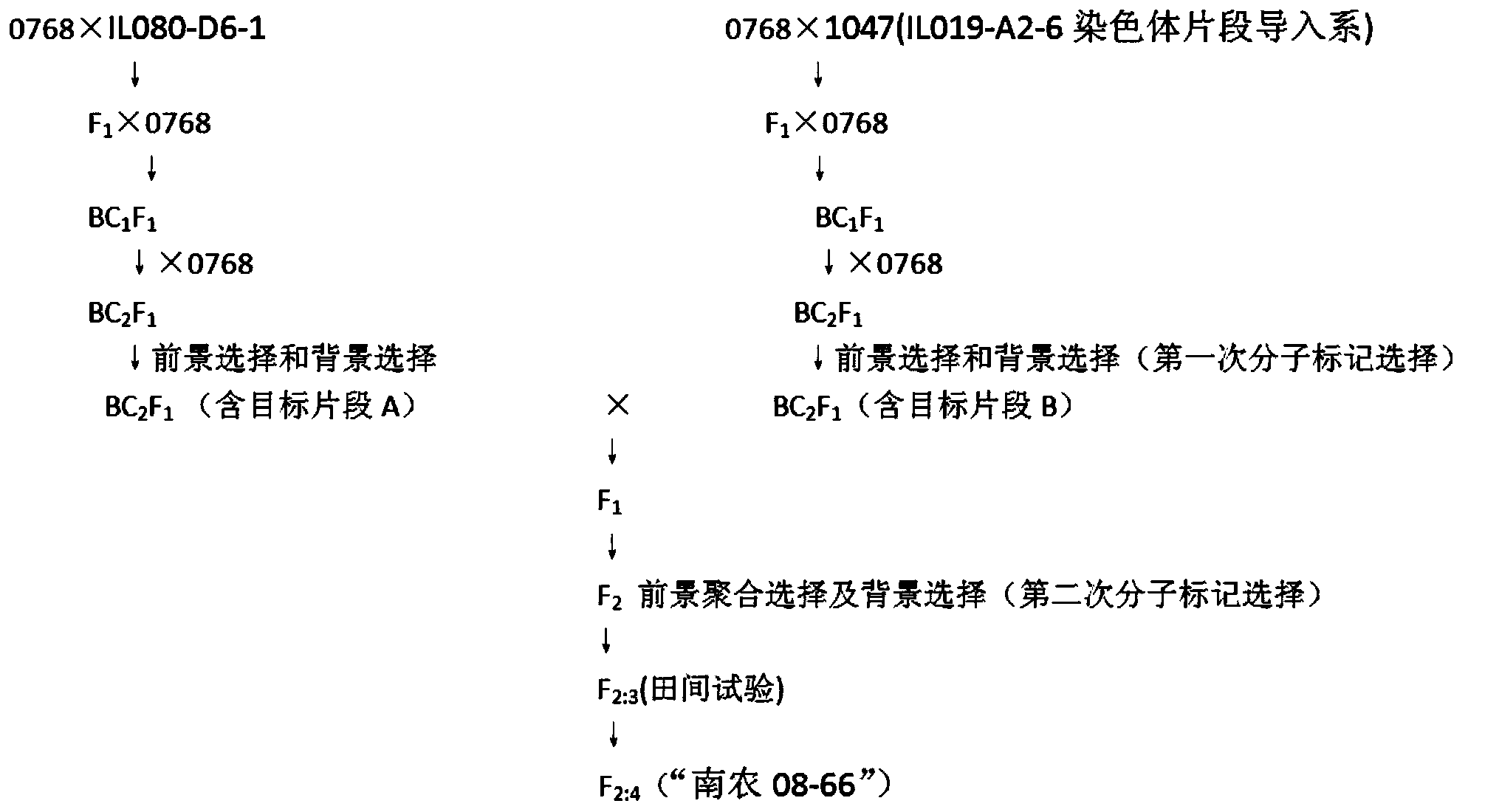Molecular breeding method for synchronously improving length, strength, and fineness of cotton fiber through polymerizing chromosome segment introgression lines
A technique for chromosome fragmentation and fiber strength, applied in botany equipment and methods, biochemical equipment and methods, plant genetic improvement, etc., to achieve the effects of long breeding cycle, increased fiber length and fiber strength, and heavy hybridization workload
- Summary
- Abstract
- Description
- Claims
- Application Information
AI Technical Summary
Problems solved by technology
Method used
Image
Examples
Embodiment 1
[0028] Selected parents: The Cotton Research Institute of the State Key Laboratory of Crop Genetics and Germplasm Innovation of Nanjing Agricultural University uses the genetic standard line TM-1 of upland cotton as the recurrent parent, and the disease-resistant and high-quality Sea Island Cotton Sea 7124 strain as the donor parent (non-recurrent parent) , combined with SSR molecular marker-assisted selection covering the whole genome in the high generation of backcrossing, 174 sea-island cotton chromosome fragment introduction lines with the background of TM-1, the first domestic upland cotton genetic standard line, were bred, and the genome coverage rate reached 83.5%. Through continuous 2-year testing of cotton fiber quality of sea-island cotton chromosome segment introduction lines, the introduction lines IL080‐D6‐1 (CGMCC NO.4685) and 1047 (CGMCC NO. ‐A2‐6 chromosome fragment introduction line). IL080‐D6‐1 fiber length 31.5‐32.5mm, fiber strength 32.7‐33.5cN / tex, microna...
PUM
 Login to View More
Login to View More Abstract
Description
Claims
Application Information
 Login to View More
Login to View More - R&D
- Intellectual Property
- Life Sciences
- Materials
- Tech Scout
- Unparalleled Data Quality
- Higher Quality Content
- 60% Fewer Hallucinations
Browse by: Latest US Patents, China's latest patents, Technical Efficacy Thesaurus, Application Domain, Technology Topic, Popular Technical Reports.
© 2025 PatSnap. All rights reserved.Legal|Privacy policy|Modern Slavery Act Transparency Statement|Sitemap|About US| Contact US: help@patsnap.com



